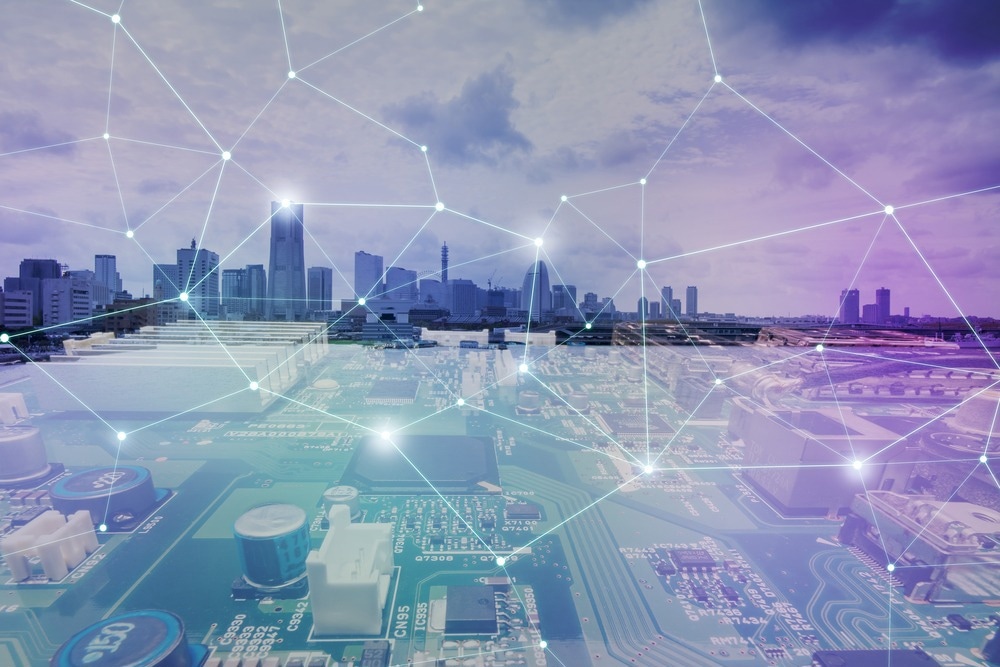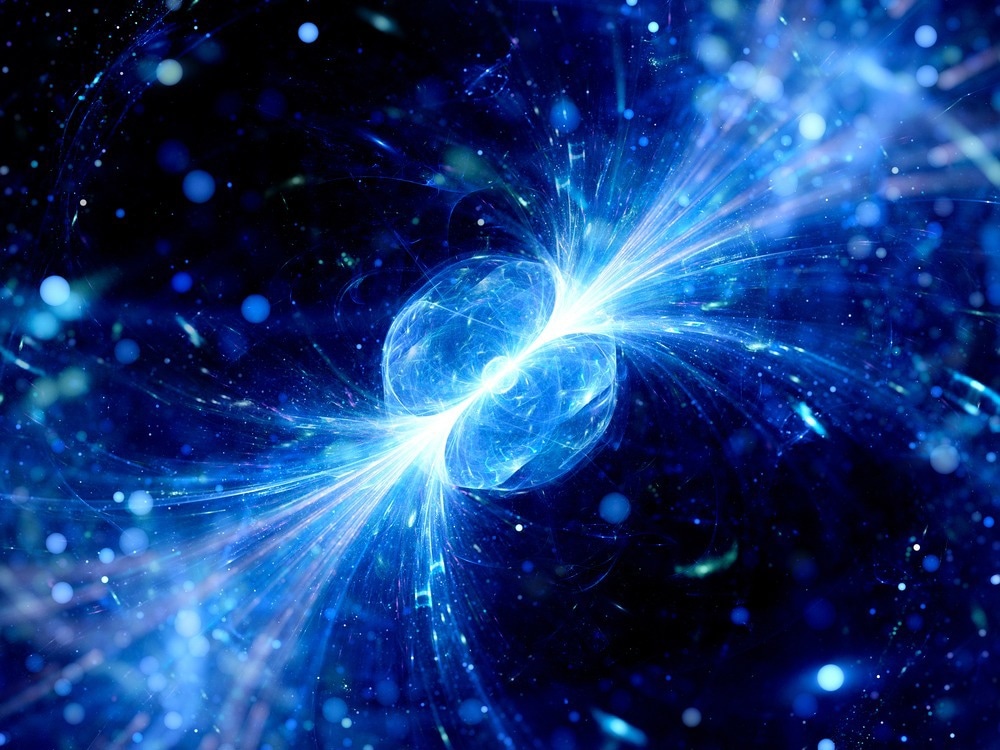Quantum sensing harnesses the unique properties of quantum mechanics to enable precise measurements, opening up new frontiers in scientific research and practical applications. This article will overview some of the key industries and applications that stand to benefit most from ongoing innovations in quantum sensing.

Image Credit: metamorworks/Shutterstock.com
Quantum Sensing: A Paradigm Shift in Sensing Technology
At its core, a sensor is a device designed to measure physical phenomena. Throughout history, humans have developed various sensors, from scales for weighing goods to compasses for determining direction. In the modern era, our smartphones employ sensors like gyroscopes and accelerometers for tasks like measuring tilt and acceleration.
Quantum sensors represent the next frontier in sensing technology, unlocking possibilities in cutting-edge applications such as brain-computer interfaces and precise position, navigation, and timing. These sensors operate by capitalizing on the delicate nature of quantum states.
In the quantum realm, particles exist in a state of "superposition," meaning their properties, like position and spin, exist as probability distributions encompassing all potential values simultaneously. However, their superposition states change over time when external forces interact with these particles. Quantum sensing revolves around monitoring these changes in the probability distribution of quantum particles and using this data to calculate the magnitude of the external forces acting upon them.
Quantum sensors are diverse, operating on different principles, and each is suitable for specific applications, allowing them to complement one another in various fields of study and industry.
Applications and Industries Benefiting from Quantum Sensors
Healthcare and Medicine
Sensitive quantum magnetometers like diamond nitrogen-vacancy centers and superconducting quantum interference devices (SQUIDs) enable technologies such as quantum magnetoencephalography, providing new windows into brain activity with unprecedented spatial and temporal resolution.
Quantum sensors are advancing neuroscience by accelerating magnetoencephalography (MEG) development, enabling precise measurement of tiny magnetic fields generated by neural activity without cooling, even during patient mobility. This innovation paves the way for brain-computer interfaces and applications in conditions like attention deficit hyperactivity disorder (ADHD).
The EU-funded MetaboliQS project seeks to boost MRI sensitivity by up to 10,000 times through quantum hyperpolarization using diamond quantum sensors. This advancement eliminates the need for extensive sample cooling, allowing for highly detailed imaging and tracking of biochemical processes within the body, earlier disease detection, enhanced understanding of disease progression, and tissue changes over time.
Researchers at the Institute for Quantum Computing have developed a quantum optical sensor that can detect single photons across a broad spectrum, allowing real-time monitoring of radiation levels during cancer therapy. This ensures optimum dose delivery to kill cancer cells while avoiding overexposure of healthy tissue. Beyond dose monitoring, this quantum sensor holds the potential to significantly enhance high-speed space imaging and produce long-range, high-resolution 3D images.
Quantum Navigation: Revolutionizing Positioning and Mapping
Quantum sensing provides a highly precise and secure navigation system that overcomes vulnerabilities in GPS signals susceptible to disruption. Unlike GPS, which can be jammed or spoofed, quantum sensing relies on Earth's magnetic field for resilience.
Quantum sensors, including atomic gyroscopes and magnetometers, enhance inertial navigation, ensuring accurate positioning in GPS-unreliable environments like road tunnels and missile systems. While still in the laboratory proof-of-concept phase, these sensors hold potential applications in industries such as automotive and aerospace, offering secure and dependable navigation, even in the face of malicious attacks.
The potential economic loss from GPS signal disruption, estimated at $1 billion daily, drives the development of a Quantum Positioning System (QPS) by companies like Q-CTRL, Vector Atomic, and ColdQuanta. This system uses quantum accelerometers.
Quantum Sensing for Energy Applications
Integrating quantum sensors benefits the energy industry, enhancing efficiency, safety, and reliability across various applications. Quantum sensors provide unparalleled sensitivity for monitoring critical parameters in energy infrastructure, enabling early equipment failure detection and predictive maintenance.
In smart buildings and grids, these sensors help automate energy systems, optimize electrical grids, ensure reliable power delivery and minimize waste. In the nuclear industry, they enhance plant efficiency and safety, aiding in radiation breach detection and remote monitoring.
In the fossil fuel industry, quantum magnetometers and gravity sensors can precisely map resources like oil deposits underground for enhanced recovery and discovery and enable accurate greenhouse gas detection, contributing to safety and emissions reduction.

Image Credit: sakkmesterke/Shutterstock.com
Construction and Infrastructure Industry
Quantum sensors have transformed underground surveying, aiding in exploring underground infrastructure, tunnels, and geological formations. This advancement has significantly reduced geotechnical risks and saved time and money on projects like HS2 rail, where the utility sector conducts 1.5 million annual street works to address buried infrastructure issues.
Construction projects frequently face delays and budget overruns due to underground challenges, with a Dutch study attributing 37% of construction delays to ground conditions. Traditional imaging techniques, like Ground Penetrating Radar (GPR), rely on radio frequency electromagnetic sensors, but soil limitations restrict their depth penetration to just a few centimeters.
In contrast, quantum gravity sensors have the potential to detect much deeper, theoretically extending to the Earth's core. These sensors operate by dropping charged atom clouds, leveraging the principle of superposition to measure density variations and infer subsurface conditions accurately.
Quantum sensors, with 10-9 g sensitivities, detect micro-scale ground shifts and vibrations, offering advantages over conventional sensors. For example, quantum fiber optic gyroscopes and accelerometers on bridges track micro-movements, while quantum tiltmeters and seismometers near dams detect foundational changes and seismic activity.
These real-time networks enable preventative maintenance, damage mitigation, and early earthquake warnings, reducing casualties and infrastructure damage.
Metrology Research
Quantum sensing leverages the wave-particle duality of atoms, allowing for precise measurements of physical quantities. Atom interferometry is a key technique in this domain, where atoms exhibit wave-like behavior and interference patterns reveal extremely fine resolution of phase shifts caused by forces like gravity. This allows quantum sensors to map variations in gravity, magnetic fields, rotation, etc., with accuracy far beyond conventional optical interferometers.
These quantum measurement capabilities are invaluable for precision research, especially in redefining fundamental standards and units.
Geology and Natural Resource Exploration
Quantum sensors have greatly enhanced the exploration of geology and natural resources by offering profound insights into underground rock and soil conditions. This advancement benefits various sectors, including oil and gas prospecting, mining, construction, and landfill management. Additionally, it aids in locating buried assets whose positions have been lost or are unknown, such as ancient archaeological sites or waterways that are challenging to survey using conventional methods.
In the environmental context, quantum gravity sensors and magnetometers can detect subsurface conditions all the way to the Earth's core. As a result, companies like SBQuantum and Nomad Atomics are pioneering the development of these sensors, enabling the discovery of new mineral and water resources.
Challenges and Future Outlook
From earlier disease detection to natural resource mapping to fundamental physics, quantum sensing opens up numerous opportunities across diverse fields. As a result, quantum sensing is expected to drive significant market growth, reaching $3 billion to $5 billion by 2030 and contributing to the broader sensor market's expansion.
However, it faces challenges related to environmental sensitivity, miniaturization, and practical, cost-effective implementation. In addition, these sensors are exceptionally sensitive, making it challenging to filter out unwanted noise and maintain measurement accuracy.
Despite these obstacles, the future of quantum sensing holds great promise and is set to reshape how we perceive and interact with the world around us.
References and Further Reading
Aslam, N., et al. (2023). Quantum sensors for biomedical applications. Nature Reviews Physics, 5(3), pp. 157-169. doi.org/10.1038/s42254-023-00558-3
Crawford, S. E., et al. (2021). Quantum sensing for energy applications: Review and perspective. Advanced Quantum Technologies, 4(8), p. 2100049. doi.org/10.1002/qute.202100049
Degen, C. L., et al. (2017). Quantum sensing. Reviews of modern physics, 89(3), p. 035002. doi.org/10.1103/RevModPhys.89.035002
O'Callaghan, J. (2019). Quantum technology could revolutionise the detection and treatment of diseases. The Research and Innovation Magzine. [Online]. Available at: https://ec.europa.eu/research-and-innovation/en/horizon-magazine/quantum-technology-could-revolutionise-detection-and-treatment-diseases
Munro, E. (2018). Quantum sensing. [Online]. Available at: https://medium.com/@quantum_wa/quantum-sensing-f33643d098bb
Bongs, K. (2023). Are quantum sensors the key to transforming our lives? University of Birmingham. [Online]. Available at: https://www.birmingham.ac.uk/research/quest/emerging-frontiers/quantum-sensors.aspx
SandboxAQ. (2023). The Transformative Impact of Quantum Sensors. [Online]. Available at: https://www.sandboxaq.com/post/the-transformative-impact-of-quantum-sensors
University Of Waterloo. (2023). Monitoring cancer at the nano-level. [Online]. Available at: https://uwaterloo.ca/institute-for-quantum-computing-impact-report/impact-report-7/quantum-sensing/monitoring-cancer-nano-level
Wan, C. (2022). Exploring the quantum triad: Quantum sensing. [Online]. Available at: https://www.bvp.com/atlas/exploring-the-quantum-triad-quantum-sensing
Disclaimer: The views expressed here are those of the author expressed in their private capacity and do not necessarily represent the views of AZoM.com Limited T/A AZoNetwork the owner and operator of this website. This disclaimer forms part of the Terms and conditions of use of this website.